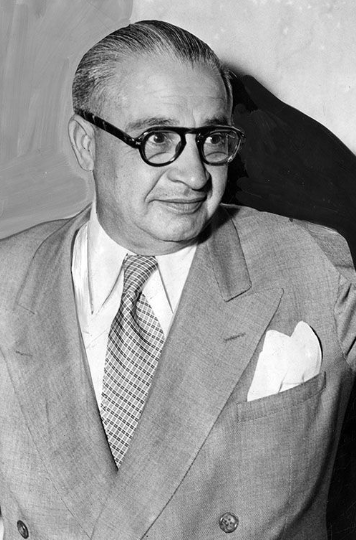There are weapons you see coming—bullets, indictments, rivals with knives. And then there are the quiet assassins, cloaked in morality and bureaucracy. For the American Mob, few laws were more deceptively dangerous than the Mann Act.
Enacted in 1910 and known officially as the White-Slave Traffic Act, the law was born out of public panic—moral crusaders warning that young white women were being trafficked and seduced into lives of prostitution by foreign-born predators. The law made it a federal crime to transport women across state lines “for the purpose of prostitution or debauchery, or for any other immoral purpose.”
But as with many things in American justice, the law’s surface intent and its actual use diverged almost immediately. In the hands of ambitious prosecutors, the Mann Act became less about protecting women and more about policing behavior—and later, breaking men too powerful to touch by any other means. It became a scalpel used to gut organized crime from the inside out.
And at the center of its most infamous prosecution sat Charles “Lucky” Luciano—railroaded, betrayed, and buried by a lie the government never bothered to untangle.
The Velvet Noose
By the 1930s, the federal government was struggling to bring the Mafia to heel. The crime syndicates had grown too powerful, too insulated, and too sophisticated. Witnesses disappeared. Records were destroyed. Cops were bought. Juries were tainted. Traditional methods of law enforcement hit a wall.
Enter the Mann Act.
It didn’t require proof of racketeering, extortion, or murder—just travel, a woman, and what could be described as an “immoral purpose.” In an era where “immoral” was whatever a judge said it was, that opened the door for creative prosecutions. It was lawfare dressed in virtue.
And Luciano was the perfect target.
By 1936, Lucky Luciano was at the pinnacle of his power. He had transformed the American Mafia into a national syndicate, enforcing a Commission-style government across criminal families and reaping the spoils of gambling, labor rackets, and illicit booze. But his control of prostitution? That part was wildly overstated—and possibly nonexistent.
Still, Special Prosecutor Thomas E. Dewey needed a win. He needed a head on a spike to propel his political career. So he went after Luciano with the Mann Act in hand.
The Frame Job
The Luciano case was built on shaky ground. The government claimed that Luciano ran a vast prostitution ring across New York and beyond, that he orchestrated the movements of dozens of women, and that his criminal empire relied on their exploitation. But the truth was uglier—because it wasn’t true at all.
Many of the women who testified were coerced, threatened, or offered deals. Some never even met Luciano. Others admitted under cross-examination that they didn’t know who was in charge—just that cops told them to name “Charlie Lucky.”
Luciano himself was largely absent from the alleged operations. He wasn’t running brothels. He wasn’t handling the women. He wasn’t even in the state most of the time. His supposed role was managerial, at best—a claim prosecutors used to bridge the gap between fact and fiction.
But it worked. The Mann Act didn’t require proof of direct involvement—just implication, intent, and jurisdiction. And Dewey made sure all three were manufactured.
Luciano was convicted and sentenced to 30 to 50 years in prison. Dewey became a national figure. And the truth got buried under headlines.
Years later, even officials who had worked the case quietly admitted the evidence was thin. Some called it a political prosecution. Others called it a setup. But the sentence stood, and the message was clear: The Mann Act could kill you, even if you’d never pulled a trigger.
The Vagueness That Killed
What made the Mann Act so dangerous was its vagueness. The phrase “for any other immoral purpose” was a blank check for prosecutors. It could mean prostitution. It could mean adultery. It could mean an affair between consenting adults that crossed state lines. The law gave moral panic the weight of federal prison time.
And for the Mob—men who frequently traveled with mistresses, showgirls, or paid companions—it was a ticking time bomb. It didn’t matter if the women were willing. It didn’t matter if they were in love. If you took her across a state border, and if a prosecutor didn’t like your face or your reputation, you were fair game.
Jack Dragna and the Thin Ice
The East Coast wasn’t the only place where the Mann Act haunted mobsters. On the West Coast, Los Angeles boss Jack Dragna walked the razor’s edge in the 1950s. Under constant surveillance, Dragna was trailed as he flew women between Vegas, L.A., and Palm Springs—women believed to be showgirls or escorts tied to mob-affiliated clubs.
Federal agents built a potential Mann Act case, watching his every move. But when the women refused to testify, the charges vanished. Dragna had sidestepped the trap, but only barely. The implication was enough to draw federal heat and increase scrutiny on his movements.
He didn’t make the mistake again.
The Quiet Threat Behind the Law
Unlike RICO, which would later revolutionize federal prosecutions of organized crime by making leadership accountable for systemic acts, the Mann Act didn’t need to prove a criminal enterprise. It just needed one trip, one woman, and the assumption of vice.
And yet it left destruction in its wake. Mobsters, entertainers, athletes, even clergy members fell under its wide net. Careers ended. Families shattered. Men were imprisoned not for what they did, but for who they were with—and where they took them.
The Mann Act was the perfect tool in an era before widespread surveillance, before wiretaps were admissible, before forensic accounting. It was morality weaponized.
A Law Out of Time
By the 1980s, the Mann Act was finally reined in. The vague “immoral purpose” clause was struck, and the law was revised to focus solely on cases of coercion and trafficking. But by then, its damage had been done.
It had helped put Lucky Luciano behind bars on trumped-up charges. It had nearly taken down Jack Dragna. It had been wielded not as a safeguard, but as a sword—cutting into the lives of men who couldn’t be touched any other way.
The Mob always feared informants, wiretaps, undercover cops. But the Mann Act? That was the killer in a Sunday suit—smiling, legal, and waiting just across the state line.
Final Reflection
The Mann Act wasn’t just a law. It was a mirror held up to America’s moral hypocrisy—a country that allowed organized crime to flourish, then prosecuted men not for murder, but for sex. It was the long arm of a puritanical justice system weaponized by politics and power.
And for Charles “Lucky” Luciano, that mirror never cracked. It swallowed him whole.
Not because he was guilty.
But because someone needed to be.


